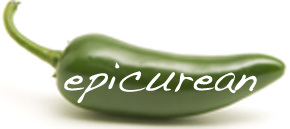Ingredients
- MERINGUE
- A foam of beaten egg white and sugar. Egg foams were used in pastries much earlier, but the name meringue came from a pastry chef named Gasparini in the Swiss town of Merhrinyghen. In 1720, he created a small pastry of dried egg foam and sugar from which the simplified meringue evolved. Its fame spread and Marie Antoinette is said to have prepared the sweet with her own hands at the Trianon in France.
- The most critical factor in making meringue is humidity. Because of its high sugar content, meringue can absorb moisture from the air and become limp and sticky. For best results, make meringue on a bright, dry day.
- Be sure that beaters and bowls are clean and completely free of fat or oil because the least bit of fat will prevent beaten egg whites from reaching their full volume. Use only metal or glass bowls. Plastic bowls tend to absorb fat.
- After separating eggs, allow the whites to stand at room temperature about 30 minutes before beating so they will reach their fullest volume.
- Beat the whites with cream of tartar, using 1/2 teaspoon for each 2 egg whites, until foamy. (Cream of tartar lends stability to egg foams.) When foamy, gradually beat in the sugar, 1 tablespoon at a time. Continue beating until sugar is dissolved and soft peaks form. (If the sugar is not completely dissolved, the meringue will be gritty. Rub just a bit of meringue between thumb and forefinger to feel if the sugar has dissolved.)
- There are several kinds of meringues, each suited to a special use. The differences are in the ratio of egg white to sugar, the method of mixing or the method of cooking.
Directions
Soft Meringue
Used to top pies and puddings. The usual ratio is 2 tablespoons of sugar to 1 egg white. The meringue is beaten until soft peaks form, then swirled over a hot, precooked pie filling or pudding and baked until peaks are lightly browned. A 3-egg-white meringue will cover a 9-inch pie. Bake it in a preheated 350:F. oven 12 to 15 minutes. For a meringue containing more egg whites, bake at 325:F. for 25 to 30 minutes.
Sometimes liquid accumulates between the meringue and the filling. This weeping can be minimized if the filling is hot when the meringue is put on it. On a pie, the meringue should touch the crust all around the edge or it may shrink during baking.
Hard or Swiss meringue
A confection or a foundation for fillings of fruits or puddings. Hard meringue is produced by increasing the proportion of sugar to 4 tablespoons of sugar per egg white and beating until stiff peaks form.
The meringue may be baked on a baking sheet greased with unsalted shortening (not oil) or on a baking sheet lined with waxed paper, brown paper or foil. It may be piped through a pastry tube or shaped gently with a spoon or spatula. It may also be baked in a greased pie plate, cake pan or springform pan depending upon its intended use.
When baked in a pie plate, the meringue forms a delicate crust for such fillings as chocolate or lemon and the result is often known as Angel Pie. Meringue baked in a cake or springform pan is often served with whipped cream and fruit and is called Schaum Torte or Pavlova.
The texture of the finished meringue can be varied from dry and crisp to chewy depending upon the oven temperature and baking time.
Meringue baked or, more properly, dried in a preheated 225:F. oven for 1 to 1= hours until a cake tester or toothpick inserted in the center comes out clean, will be white, dry and crisp. The oven should be turned off and the meringue left in the oven for at least an hour longer. A shorter baking time will produce a chewier center. For a light golden hue, bake at 250:F. for less time or until the center is done as desired.
Hard meringues may be stored for several months in a tightly sealed container with waxed paper between the layers.
If meringue should lose its crispness, reheat it in a preheated 250:F. oven for 15 to 20 minutes.
Italian meringue
Also known as Boiled Frosting, this is made by beating hot sugar syrup into beaten egg whites.
Italian meringue may be used to frost cakes, as a topping like soft meringue, as a base for frozen desserts, baked like hard meringue or may be poached. When folded into whipped cream, it becomes Chantilly Meringue which may be combined with fruit as a filling for Cream Puffs or used as a frosting.
Poached meringues
These are also known as Snow Eggs or Oeufs a la Neige and are often served with custard or fruit sauce. The are also the islands in Floating Island Pudding, Soft, hard and Italian meringue mixtures may be poached.
To poach, drop the meringue mixture by spoonsful onto simmering milk or water and simmer, uncovered, until firm, about 5 minutes. Smaller spoonsful will not need to be turned over but large ones may require turning halfway through the cooking time. Remove from the liquid with a slotted spoon and drain on absorbent paper. Chill until used.
Print this recipe
Submitted 6/13/05.
Source: Internet
Submitted By: Marlen
matchlessm@aol.com
How to make meringue
